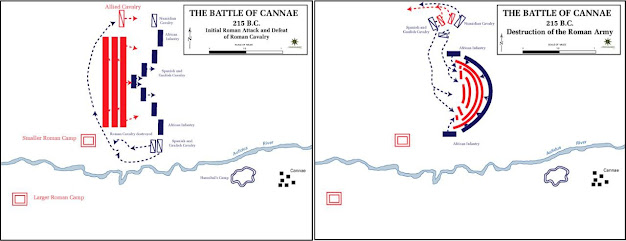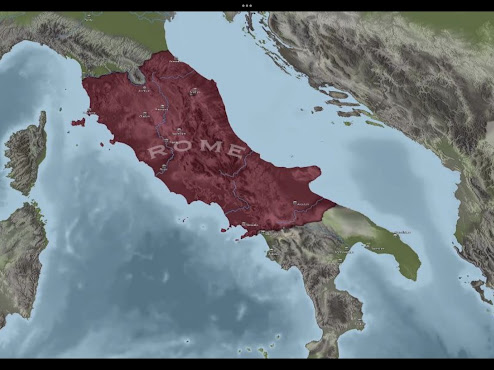Aftermath of battle of Cannae
After victory at Cannae, Hannibal sent his younger brother Mago to Carthage to bring more troops. When Mago reached Carthage and told the senate the news of Hannibal’s victory in Italy, the senate divided into to groups, one which represent the interests of wealthy aristocrats under leadership of Hanno the second refused to reinforce Hannibal arguing that Hannibal’s victory over Rome will make him the first man in Carthage threading their positions. In addition, those wealthy aristocrats depends on the silver mines in Spain, and the war against Rome deprived them from these commerce as they cannot use their ships in the mediterranean, so they wants peace at any cost to resume their commerce, while the other division saw that Hannibal achieved something no one achieved before deciding to reinforce Hannibal with troops in Italy. These divisions among the top officials would threaten the Carthaginian war effort on the long run. Meanwhile the governor of Syracuse east of Sicily joined Hannibal. Fearing losing of Sicily, Rome sent a fleet to surround the city and to prevent Carthage from sending troops to it. At the same time, Hannibal decided to conquer the cities in Campania. In Campania, only Capua decided to join Hannibal, while other cities refused. Hannibal headed to the city of Nola to capture it. Sensing the danger, Rome sent Marcellus to prevent the city from falling in the hands of Hannibal. Marcellus was actually a capable commander rebound for his victories agains Gallic tribes. The people of Nola were, against the will of the ruling elite in the city which was loyal to Rome, supporters to Hannibal and decided to open the gates to Hannibal, but Marcellus’ arrival at the city prevent them from doing so, as Marcellus executed the conspirators. After a short indecisive battle between Hannibal and Marcellus armies, Hannibal retreated and Canceled the siege. Following the abandonment of the siege of Nola, Hannibal attacked the city of Cassilinuim, as this city was on the same road with Rome, so by capturing it will cut Marcellus supply lines. At this time the Roman armies were divided between three commanders, Marcellus, Graccus and Fabian, the general who developed the Fabian strategy. At the same time, the fleet which was patrolling in the Adriatic Sea captured some Macedonian ships bearing messengers from Philip the fifth of Macedon with messages of negotiations between the Carthaginian and Macedonian commanders. Realising the danger, Rome sent a fleet to the Adriatic Sea to prevent any reinforcement from Macedonia to Hannibal in Italy. Hannibal at this time marched to the city of Cumae, where Graaccus located, on the western coast of Italy to capture it. But the city was well fortified and Hannibal failed to capture it. Then, Hannibal headed again toward Nola, where Marcellus stationed, but unexpectedly, the Roman Army under the command of Marcellus managed to defeat Hannibal’s army at the second battle of Nola causing great losses for Hannibal estimated by 5000 dead.
The battle of Hibera
While in Spain, Hasdrubal decided to join Hannibal in Italy, but before doing so, he should fight the Scipio brothers north of Italy leading to the battle of Hibera. The Roman fought ferociously, realising that if Hasdrubal managed to join Hannibal in, it would be the end of Rome. So the Roman army emerged victorious and Hasdrubal return to New Carthage. At this moment, the Carthaginian senate realised that they should interfere. So they sent tow large armies, one to Sardinia under the command Hasdrubal the bold to help people there to help revolt agains Rome and the other army under the command of Mago Barca, headed toward Spain to reinforce Hasdrubal instead of heading toward Italy to reinforce Hannibal. But the Carthaginian army which sent to Sardinia was delayed by a bad storm, so when it reached Sardinia it was too late, as the revolt had been annihilated completely, so the Carthaginian army didn’t find the support they expected and lost the battle agains the Roman troops and suffered great losses estimated by nearly 12000 dead. Sardinia now is under the Roman control.
Battle of Hibera


















